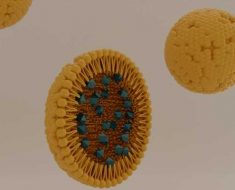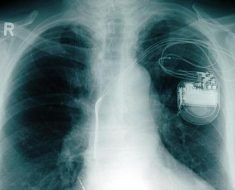NEW YORK (Reuters Health) – Endometrial thickness (ET) as measured by transvaginal ultrasound (TVUS) is an unreliable indicator of a Black woman’s need for a biopsy and may exacerbate racial disparities in endometrial cancer (EC) stage at diagnosis, researchers say.
“One clinical care pathway is to perform a diagnostic biopsy for EC only when the TVUS screening shows that the thickness of the endometrium is 4 mm or greater,” Dr. Kemi Doll of the University of Washington in Seattle told Reuters Health in an email on behalf of the authors. “But not all ECs increase ET, and uterine fibroids can make the endometrium harder to measure.”
“In light of all the factors that can affect endometrial visibility and thickness and that these factors tend to vary by race, we simulated a cohort of Black and white women,” she said. “In both our primary analysis, and multiple iterations where we changed assumptions about fibroid location, ET and visibility, and age, we found that the TVUS strategy to discriminate who requires an endometrial biopsy in the setting of post-menopausal bleeding underperforms among Black women.”
As reported in JAMA Oncology, the simulations were based on data from the Surveillance, Epidemiology, and End Results national cancer registry 2012-2016 and other sources. The team calculated diagnostic test characteristics of ET thresholds for biopsy of at least 3-mm, at least 4-mm, and at least 5-mm.
The primary outcome was accuracy of the TVUS ET threshold to accurately identify EC cases.
More than 367,000 simulated Black and white women with postmenopausal bleeding were evaluated, including more than 36,000 with EC.
Among Black women, the currently recommended 4-mm or greater ET threshold prompted biopsy for 47.5% of EC cases; among women referred for biopsy, 13.1% had EC. The area under the curve for the 4-mm or more threshold was 0.57.
By contrast, among the white women, the 4-mm or more threshold led to biopsy for 87.6% of those with EC.
“This startling difference is due to the higher prevalence of fibroids and non-endometrioid histology type (of EC) among Black women, both of which decrease the accuracy of the TVUS strategy,” Dr. Doll said. “This puts Black women at a higher risk of false negative results, which is unacceptable in a group that already is most vulnerable to the worst outcomes in EC.”
Among white women referred for biopsy, 14.6% had EC, and the AUC was 0.73. The same variations held for the 3-mm or more and 5-mm or more ET thresholds.
Dr. Doll said, “We urge all clinicians to recognize the potential for missed diagnoses among Black women, especially those with fibroids, and counsel patients on the relative benefit of endometrial biopsy for definitive diagnosis versus relying on the less invasive TVUS screening.”
Dr. Dineo Khabele of Washington University School of Medicine in St. Louis, coauthor of a related editorial, commented in an email to Reuters Health, “Black women are dying at alarming rates from EC. Current guidelines for diagnosing endometrial cancer may not be adequate. The authors demonstrate that the most basic clinical guideline – recognition and intervention using TUVS for the most common presenting symptom of endometrial cancer (postmenopausal bleeding) – can be missed in Black women.”
“Although this was a simulated retrospective cohort, the results suggest that better risk-based algorithms are needed to improve early diagnosis of EC and reduce excess mortality for Black women,” she said. “More importantly, this study adds to substantial evidence across healthcare that Black women are less likely to receive guideline-concordant care.”
SOURCE: https://bit.ly/3wTUdzF and https://bit.ly/3xTvZqd JAMA Oncology, online July 15, 2021.
Source: Read Full Article





